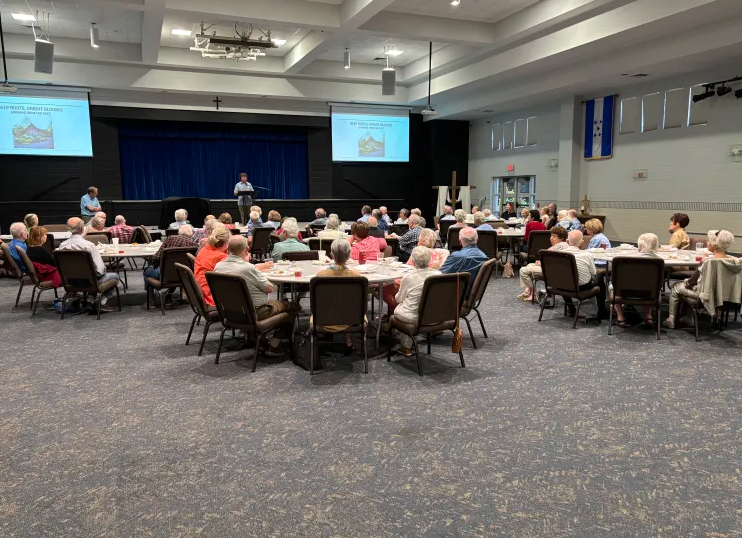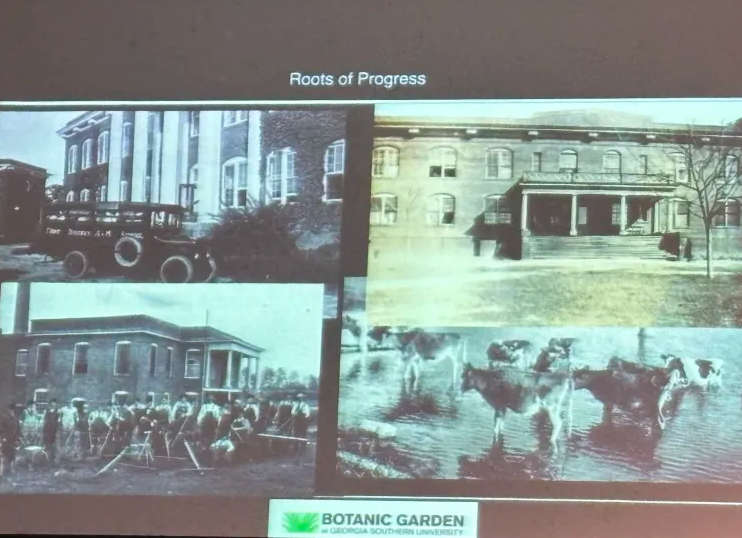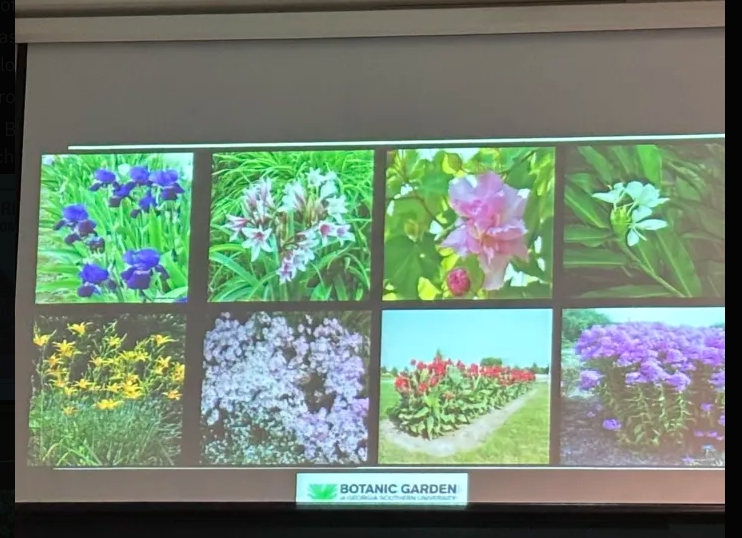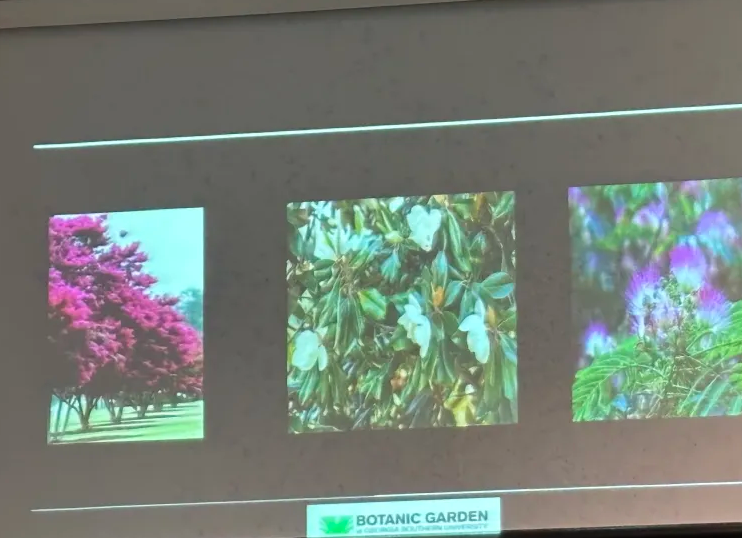On Monday, April 28, 2025, the Bulloch County Historical Society welcomed an enthusiastic crowd of approximately 70 members and guests for a special presentation by Dr. Todd Beasley, Director of the Botanic Garden at Georgia Southern. His program, titled “Growing from the Past!” explored the history, legacy, and inspiration behind America’s Golden Age of Horticulture and how it continues to shape gardening and plant collection today.
Dr. Beasley brought energy, humor, and an engaging visual presentation that sparked interactive participation during the Q&A. He highlighted the influence of historical gardening movements and encouraged attendees to think about past eras from the Age of Discovery to the Victorian period and continue to inspire future generations of gardeners and conservationists.
Before the program, guests enjoyed a traditional Southern buffet by Touch of Class catering by Annette. The menu included tossed salad with ranch, fried chicken with pulley bone, macaroni and cheese, green beans, yeast rolls, banana pudding, and assorted beverages.
Beasley, a Columbia, SC, resident with deep family roots in Statesboro, shared his personal connection to the region.

“It is special to commute weekly from my home in Columbia, SC. My father was born, raised, and graduated here in 1966.”
With a background that blends education and gardens, Dr. Beasley has worked at Riverbanks Zoo and Garden (twice), the San Antonio Botanical Garden, and the Daniel Stowe Botanical Garden, and has served as a clinical professor and fifth grade science teacher. He holds three degrees from the University of South Carolina, in Columbia SC.
The Garden’s mission, he explained, is about more than beauty.

“Every botanical garden in this country has a mission to connect people to plants. For us, it is connecting people to native plants and the old heirloom style of gardening.” He shared a vision for the next 30–50 years that includes creating an education and event center, complete with a teaching kitchen designed to bridge the past, present, and future.
“We want people to be connected to plants, collect plants, and become stewards of the environment,” he said. “We want something that captures the old mentality: Farm to Life, Farm to Table inspiration.”
Beasley explored the Golden Age of Horticulture (1770–1900) noting that in 1804, the Royal Horticultural Society was founded in England. “The growth and how gardens look towards Europe for current trends and patterns, those things still kind of happen today,” he explained.

Wealthy Europeans during the Age of Discovery (15th–18th centuries) funded expeditions to collect rare plants, making personal gardens a sign of wealth and status. European botanical gardens became treasure troves, especially by the 1790s. Beasley drew distinctions between the Age of Exploration (also called the Age of Discovery), the era of the Plant Hunters.
"Plant hunting was about finding beauty, utility, and uniqueness to bring back to the West.” He described how plant names and classifications have changed over time, sharing examples such as ‘Obelia,’ now known as Abelia, related to Honeysuckles; the Blackberry Lily, which resembles an orchid; and the beautiful fragrant banana shrub, once called ‘Shellago’, now a Magnolia.

Beasley connected the Victorian Era (1837–1901), the reign of Queen Victoria, with the peak of the horticultural movement in the U.S. “Put yourself back into the 1800s,” he invited attendees. “Think about southern cities—Old Charleston, Old Savannah, Old Augusta, Old Statesboro.” He described the heirloom plantings of that time, with daffodils, iris, Confederate rose, and other perennials that continue to grace old homesteads and family farms.
Georgia Southern’s origins in the early 1900s began as an agricultural and mechanical college, reflecting Statesboro’s strong farming heritage. Later it became a teachers’ college with agricultural education remaining central.
Dr. Beasley concluded, “Plants have an amazing story that connects past, present, and future generations in ways yet to be told, as all cultures and subcultures rely on plants directly and indirectly. It all connects back to the interest that [Dan] Bland started and how to take it to the next level.”




